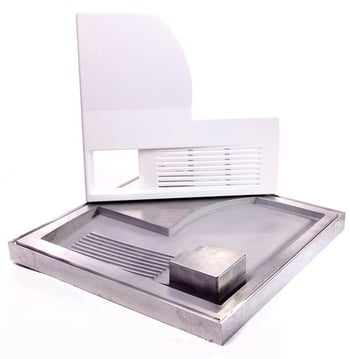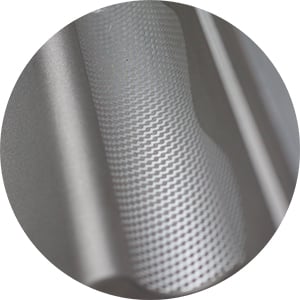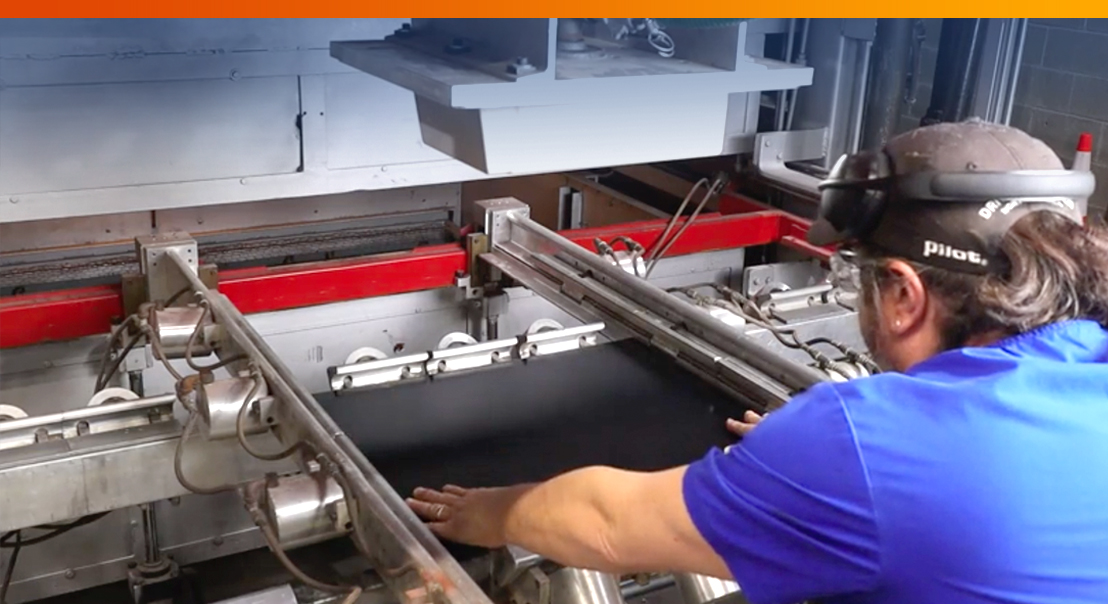Design teams face many challenges when bringing a new product to market. While product features, finishes, and fit are front and center during the design phase, it’s common to run into issues once you want to build the darn thing. Problems with prototyping parts and miscalculating the manufacturing cost-implications regularly send great products back to the drawing board.
 One way to solve these issues early in the project is by considering the benefits of hard tooling versus soft tooling. Advances in manufacturing techniques like thermoforming allow today’s designers to optimize both the prototyping phase of the project and make the manufacturing of lower volume product runs possible using soft tooling.
One way to solve these issues early in the project is by considering the benefits of hard tooling versus soft tooling. Advances in manufacturing techniques like thermoforming allow today’s designers to optimize both the prototyping phase of the project and make the manufacturing of lower volume product runs possible using soft tooling.
At Kenson Plastics, we can assist you to overcome complex prototyping and manufacturing challenges early in the product development lifecycle.
What’s the Difference between Hard Tooling and Soft Tooling?
Soft tooling allows you to prototype parts and adjust the design quickly so that all the parts fit together and work as intended - at a much lower cost compared to hard tooling. Using materials like wood or composite tooling boards means a soft tool is the most economical option during the prototype stages of the project.
Hard tooling is ideal when you are ready to move to production and have nailed down your final design. In some instances, you may want to use hard tooling during prototyping stages depending on the required tolerances, features, and details of the part.
There are benefits and drawbacks to soft tooling when you start looking at the manufacturability of your product. At Kenson, we work with teams to understand their design constraints and can recommend the best way to proceed, if we’re involved early in the process.

How to Choose between Hard Tooling and Soft Tooling
Different projects will call for different approaches during the design and development stages. We often run into situations where soft tooling would have sufficed and others where hard tooling was always the best option. The best way to choose is to engage early with a manufacturing partner like Kenson Plastics.
 The benefits of soft tooling include:
The benefits of soft tooling include:
- It uses less material to make the mold for the thermoforming process
- To make high-precision prototypes, you can machine the part after the thermoforming process to reach the required tolerances
Alternatively, hard tooling is the ideal option for when:
- You want to move to production at higher volumes
- Your part details and corner definitions are critical to the fit
- The volumes are higher and a soft tool won’t last for the anticipated number of parts
Designing High Precision Parts with Kenson Plastics
Kenson Plastics works with product designers to streamline manufacturing operations early using innovative approaches to prototyping, tooling, and machining tasks. Our in-house 3D printing capabilities give us flexibility in our prototyping. Our engineers will work with any product team that needs high-precision parts included in the forming process and guide through different solutions to make the entire project cost-effective.
To discuss our thermoforming capabilities or to see how we can assist your development and manufacturing process with soft tooling, speak to Kenson Plastics today.




 One way to solve these issues early in the project is by considering the benefits of hard tooling versus soft tooling. Advances in manufacturing techniques like thermoforming allow today’s designers to optimize both the prototyping phase of the project and make the manufacturing of lower volume product runs possible using soft tooling.
One way to solve these issues early in the project is by considering the benefits of hard tooling versus soft tooling. Advances in manufacturing techniques like thermoforming allow today’s designers to optimize both the prototyping phase of the project and make the manufacturing of lower volume product runs possible using soft tooling.
 The benefits of soft tooling include:
The benefits of soft tooling include: